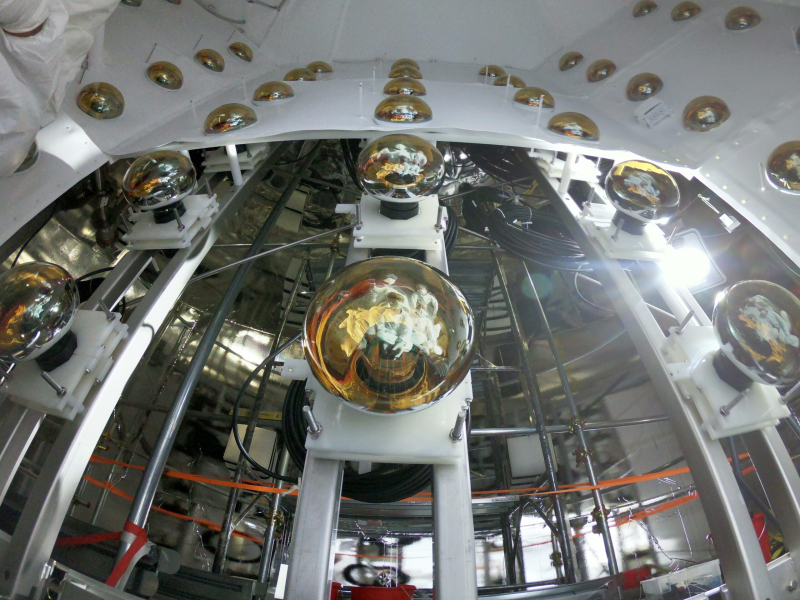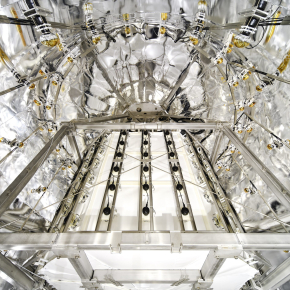First results of the WIMP research with the XENONnT experiment
The XENON collaboration presented on Wednesday 22 March the results of XENONnT, the latest generation experiment of the XENON project, dedicated to the direct search for dark matter in the form of weakly interacting massive particles (WIMPs). With an initial exposure of just over 1 ton.year and a blind analysis, the data are consistent with the assumption of background alone. XENONnT therefore sets new limits on the interaction of WIMPs with ordinary matter. With a fivefold lower background noise, XENONnT has significantly improved on the results of the XENON1T experiment, which were obtained with a similar exposure.
The XENONnT experiment is designed to search for dark matter particles with an order of magnitude higher sensitivity than its predecessor. The cylindrical detector at the heart of the experiment is a Time Projection Chamber (TPC). About 1.5 metres high and 1.5 metres in diameter, it is filled with ultra-pure liquid xenon maintained at -95°C. A mass of 5900 kg of xenon out of the 8600 kg required for the operation of the detector constitutes the active target for the interactions with the particles. It is installed inside a Cherenkov veto for muons and neutrons, deep inside the Gran Sasso National Laboratories (INFN) in Italy. XENONnT was built and commissioned between spring 2020 and spring 2021 and took its first scientific data on 97.1 days, from 6 July to 10 November 2021.
The signature of an interaction between a WIMP and a xenon atom is a tiny flash of scintillation light accompanied by a handful of ionising electrons. These are driven by an applied electric field up the CPT where they are then extracted by a stronger electric field into the xenon gas above the liquid, producing a second scintillation signal. Both light signals are detected by ultra-sensitive photodetectors, which provide energy and position information in 3D, event by event.

Dark matter experiments require the lowest possible level of natural radioactivity, both from sources intrinsically present in the liquid xenon target, from building materials and from the environment. The latter is dominated by radon atoms that are constantly emitted from detector materials and are extremely difficult to reduce. The XENON collaboration has pioneered technologies to reduce radon to unprecedented levels, from material selection campaigns to an in-line cryogenic distillation system that actively removes radon from xenon. Another important radioactive background comes from neutrons generated by the radioactivity of detector materials. In XENONnT, its impact has been reduced by a new neutron veto detector installed in the water tank around the xenon cryostat. This allows neutron events that could mimic the WIMP signature to be recognised and eliminated. The XENONnT detector is so sensitive to rare interactions that even neutrinos, the most elusive particles known to date, must be taken into account in the background model.
XENONnT is collecting more data, with improved detection conditions and an even lower background level thanks to a further improvement of the online radon removal system, with the aim of increasing the sensitivity of WIMPs over the next few years.
More information
More informations on website of experiment.
